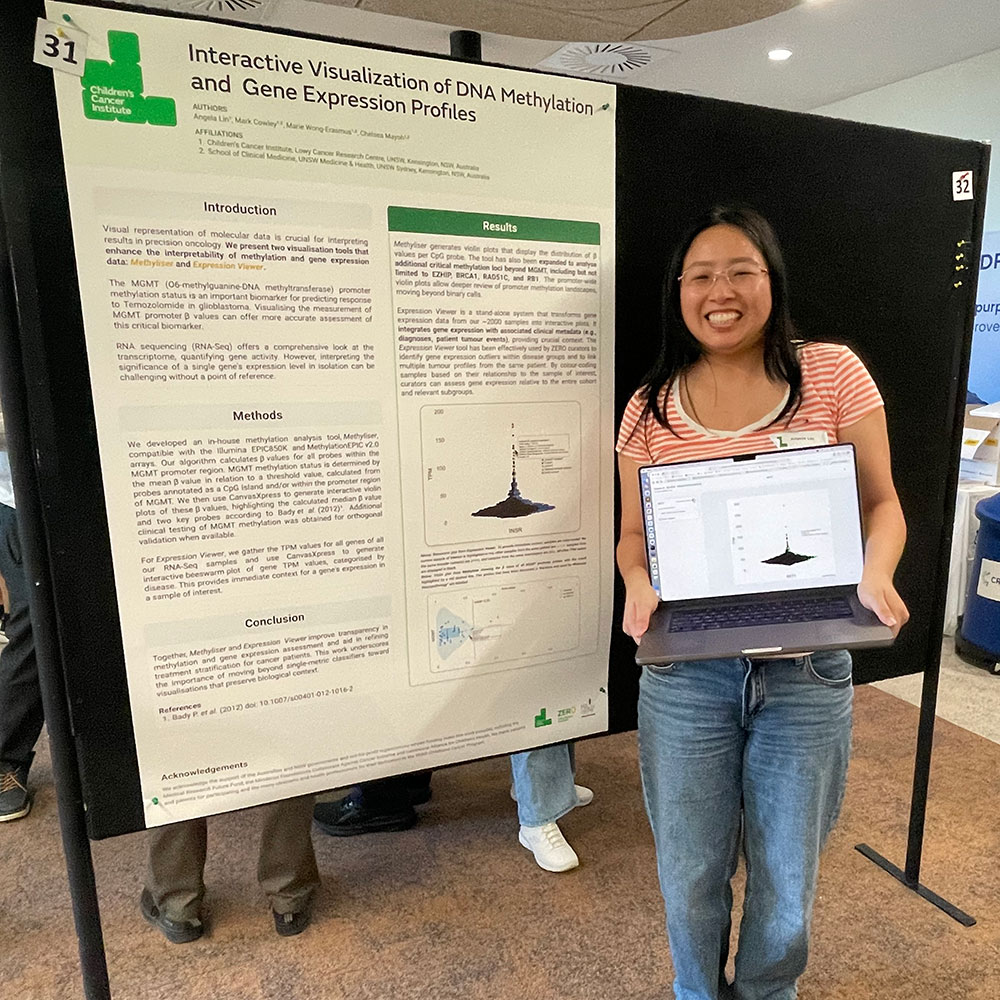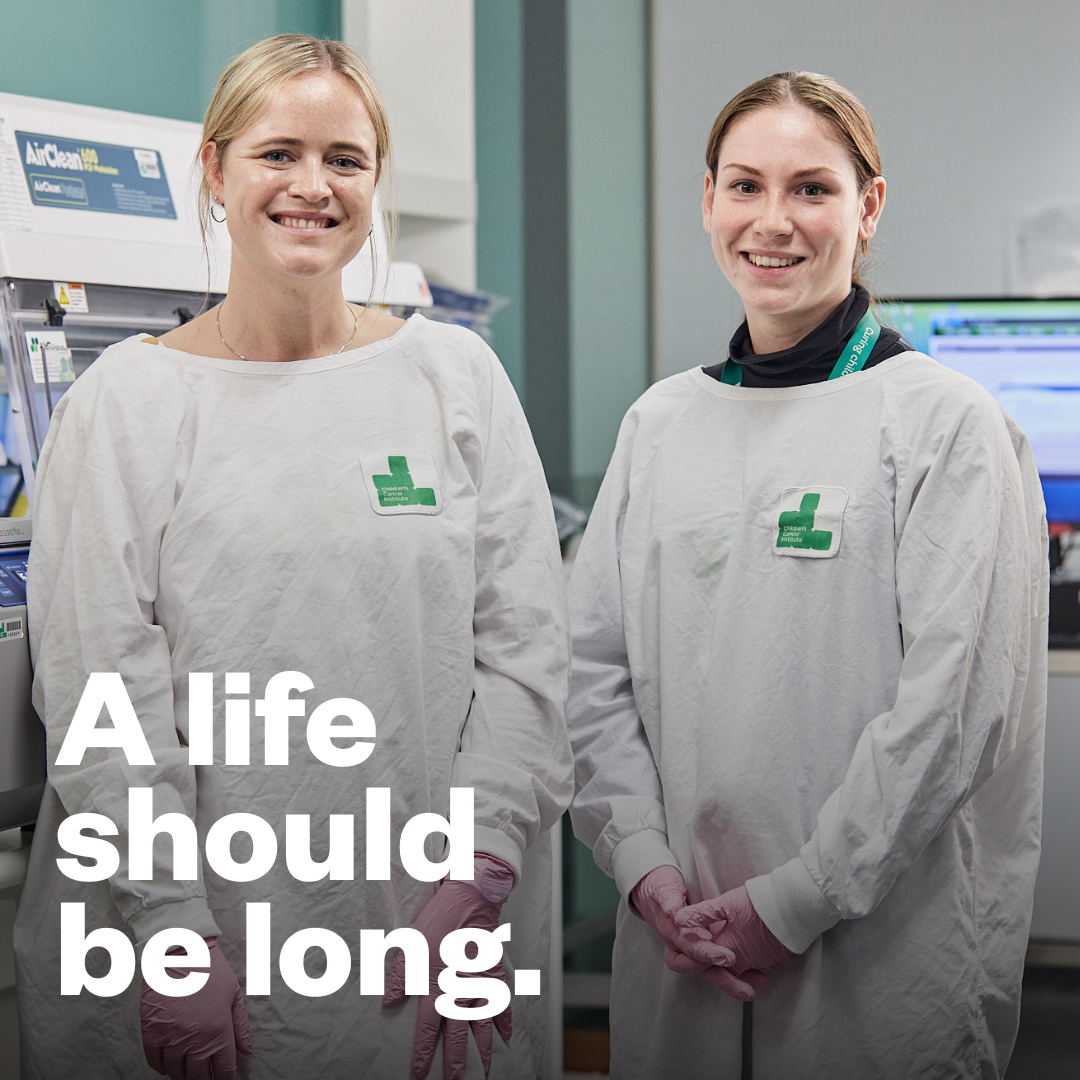At Children’s Cancer Institute, our vision is “To save the lives of all children with cancer and improve their long-term health, through research”. But how do you make a vision a reality? By coming up with a plan that keeps your goal front and centre, by considering and weighing every possibility. And then, of course, by following it through.
In our Annual General Meeting last week, we launched our Strategic Plan for the next five years. It’s a strategy we’re confident will take us closer to achieving our vision. In the words of our Executive Director, Professor Michelle Haber AM, “We can and will cure childhood cancer in the foreseeable future”.

So where do we see ourselves in five years’ time, and how are we going to get there?
Where we want to be by 2022
Here are some of the things we’re aiming to have achieved by 2022:
- Provided every high-risk child cancer patient in the country access to Zero Childhood Cancer, a personalised medicine program led by us and the Kids Cancer Centre at Sydney Children’s Hospital, Randwick
- Developed a unique international dataset containing the biological and molecular characteristics of hundreds of children with high-risk cancer, as a resource to guide clinical decisions and inform discovery research
- Grown our Computational Biology and Bioinformatics capabilities
- Significantly increased our drug development and commercialisation capability
- Facilitated multiple early phase clinical trials
- Developed new immunotherapy approaches to treating children with cancer, in partnership with Peter MacCallum Cancer Centre (Vic), the Centre for Cancer Biology (SA) and the Kids Cancer Centre, Sydney Children’s Hospital, Randwick
- Increased our discovery research capacity and excellence by recruiting both established and emerging world-leading talent
- In partnership with the Kids Cancer Centre, Sydney Children’s Hospital, Randwick, developed strength in new areas including cancer predisposition, health economics and health implementation

How we’re going to get there
Making all this happen requires a well-defined, coordinated approach. The Strategic Plan identifies two core objectives:
TRANSLATE
To accelerate the integration of our translational research into clinical care, including delivery of the flagship Zero Childhood Cancer program
DISCOVER
To pursue world class discovery research, and to feed the translational pipeline through the depth, breadth and impact of our science

To support these objectives, the plan highlights four pillars or enablers:
- EMPOWER: Attract and develop the brightest minds in a vibrant collaborative high-performance culture that fosters diversity, innovation and success
- INNOVATE: Provide our researchers and support teams with access to advanced technologies, infrastructure and facilities, creating a dynamic and cutting-edge environment for innovation
- CONNECT AND ENGAGE: Partner and collaborate with UNSW and The Sydney Children’s Hospitals Network, together with national and international clinical and research leaders and organisations, governments and industry, to leverage and maximise the outputs and impacts of our research
- PROMOTE AND FUND: Share our beliefs, vision and purpose with others to drive awareness, engagement and support for our cause that ensures we deliver our strategic objectives in a financially sustainable way
Soon after the plan’s launch, staff and Institute supporters were reminded by guest speaker Danii, whose little boy Kayne was diagnosed with brain cancer, that achieving our vision is crucial and urgent. Danii talked about the time that childhood cancer entered her family’s world, when Kayne became ill just before his second birthday.

A CT scan revealed a mass the size of a lemon in Kayne’s brain. A gruelling 18 months followed, in which Kayne had over 20 cycles of chemotherapy, two brain surgeries and six weeks of radiotherapy. He’s now aged 7 and doing well, but will live with lifelong side-effects from his treatment. Read Kayne’s story.
Danii is an avid supporter of our research.
“We are so fortunate that Kayne survived thanks to the research that came before him and that is why we believe that the research being done at Children’s Cancer Institute is so important. We hope one day there are improved treatment options that are more effective with far less long-term side effects like the ones Kayne has been left with,” she said.

Read our Strategic Plan 2018–2022
Top image: Kayne with his mum Danii.















